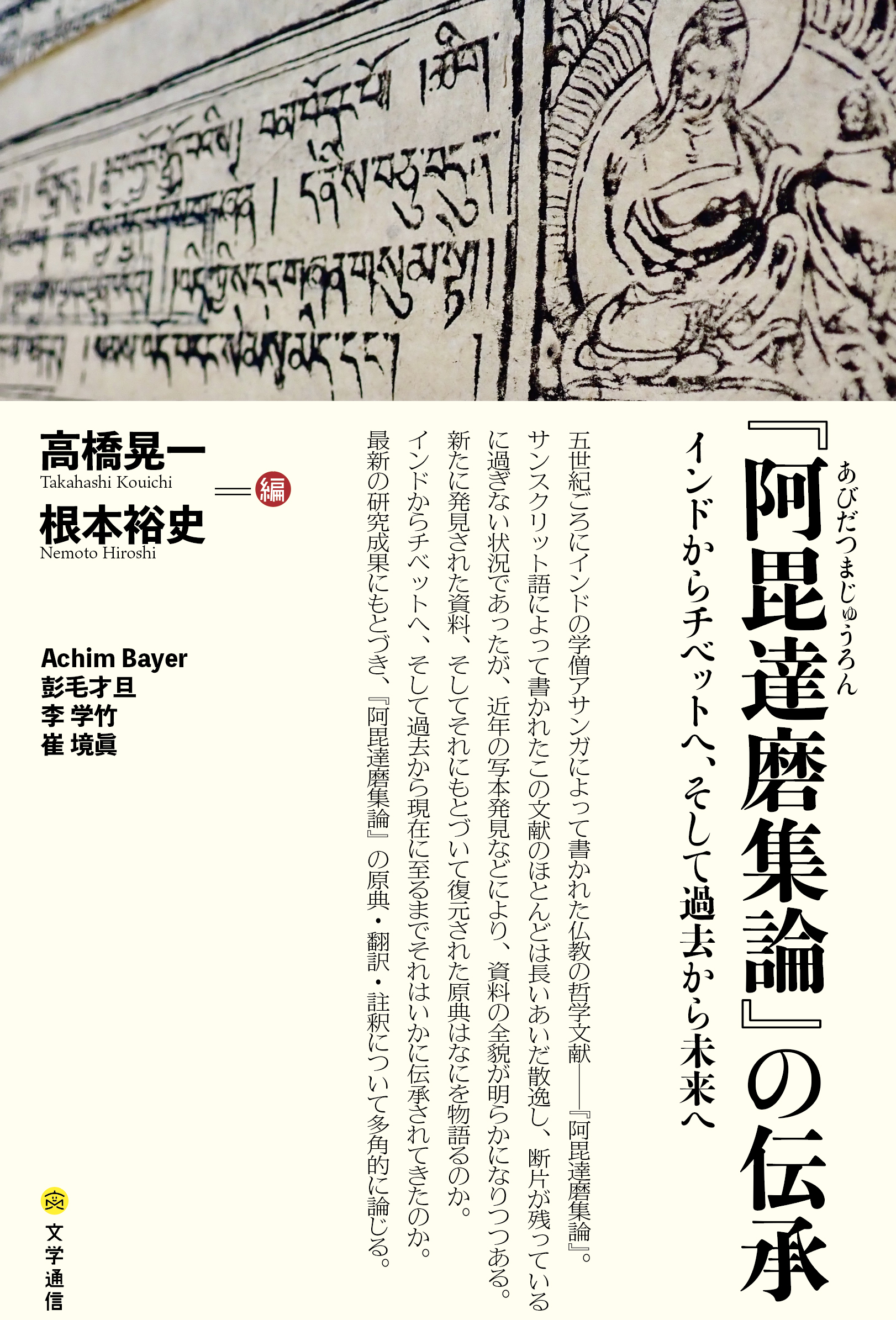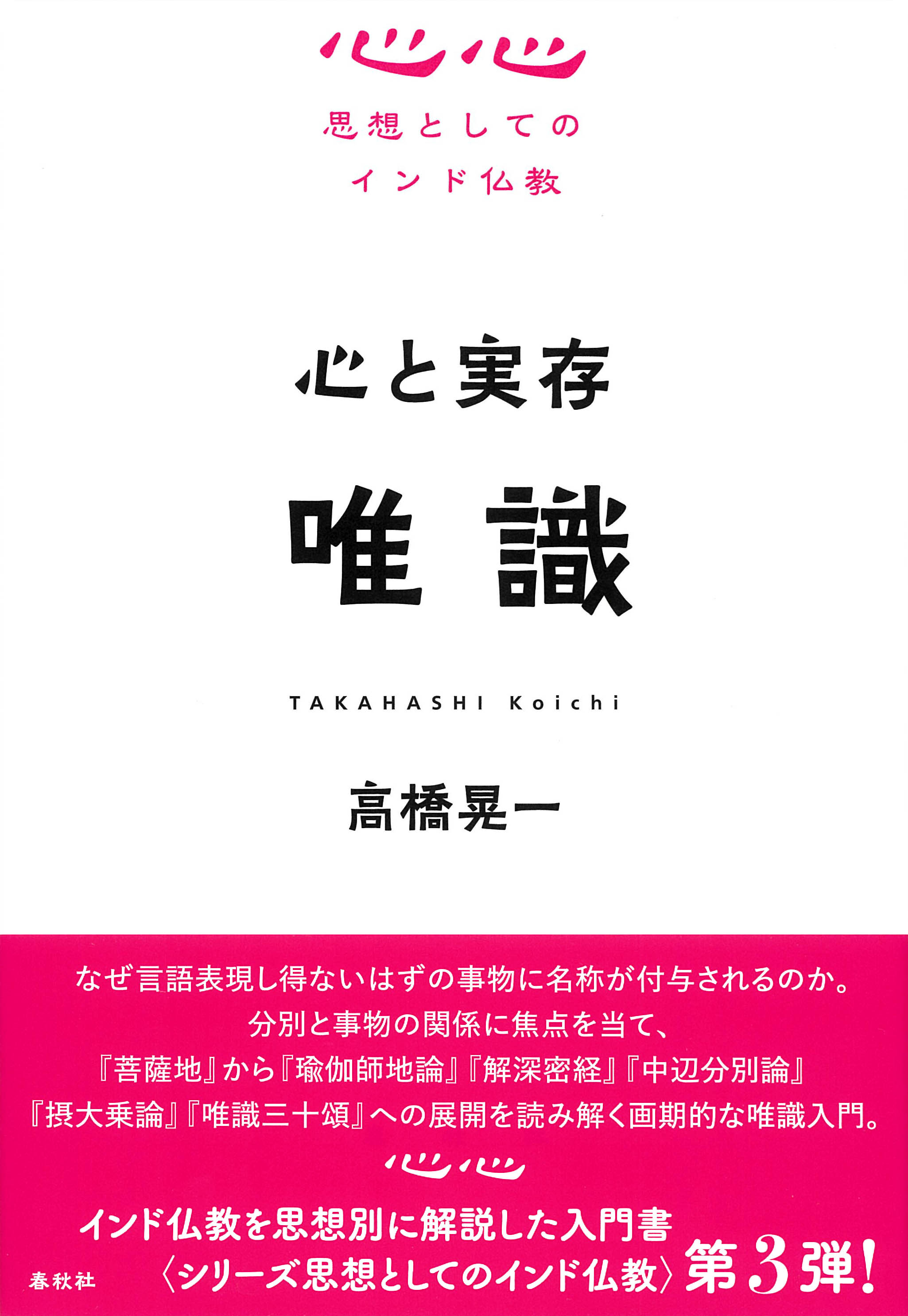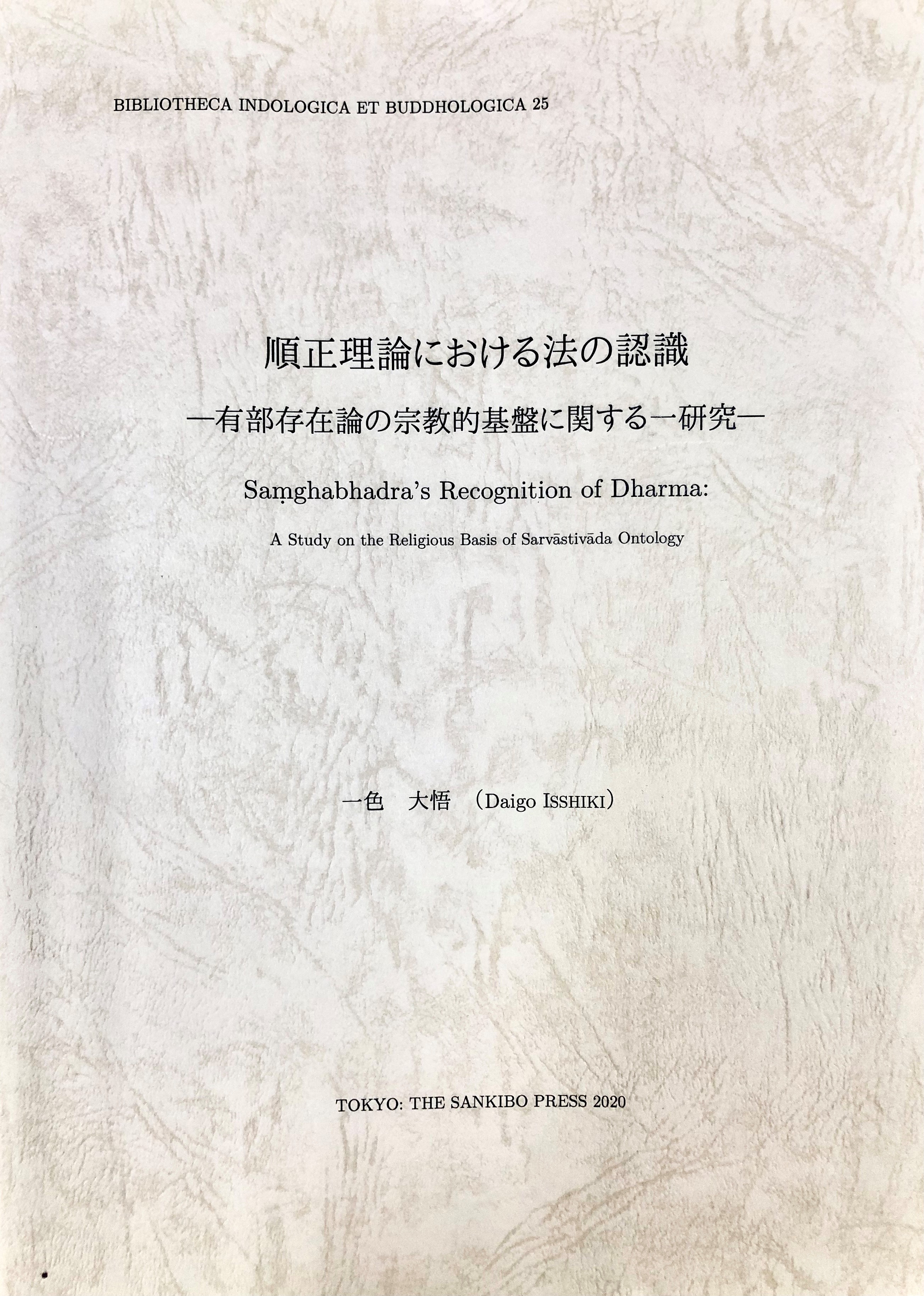
Title
Abidatsuma-jūron no Denshoō (Transmission of Abidatsuma-jūron: From India to Tibet and from Past to Present)
Size
162 pages, A5 format, softcover
Language
Japanese, English
Released
March, 2021
ISBN
9784909658517
Published by
Bungaku-Report
Book Info
See Book Availability at Library
Japanese Page
Abidatsuma-jūron, which is the subject of this book, is a book of Buddhist philosophy written around the 5th century by Asaṅga, a noted Indian scholar of “consciousness-only” (vijñapti-matratā). The original work written in Sanskrit was titled Abhidharma-samuccaya. Abhidharma is a Buddhist term that refers to philosophical texts as well as the systematic study of Buddhist doctrine. Going a little deeper, it is an important term that refers to the wisdom to realize the ultimate truth. Given the term’s significance and profundity, it was not translated in ancient Chinese texts but, rather, transliterated using Chinese characters. The other term, samuccaya, means “collection.” Thus, the title Abhidharma-samuccaya means “collection of Abhidharmas” and was translated into Chinese in the 7th century by the Chinese Buddhist monk Xuanzang as 阿毘達磨集論 [Abidatsuma-jūron], which is the name by which the text has long been known in Japan.
Incidentally, existing copies of the original Sanskrit Abhidharma-samuccaya are missing many parts, leaving only a fragmentary record of the original work. Various sources indicate that the text was also transmitted to Tibet around the 8th century and that many commentaries in Tibetan were made; it was believed that most of these copies were scattered and eventually lost. However, the situation has changed dramatically since entering the 21st century.
First, an original Sanskrit copy of Abhidharma-samuccaya was newly discovered among the manuscripts held by the China Tibetology Research Center. This copy contained many of the parts of the text that were previously thought to have been lost, giving rise to the possibility of reconstructing the original work. That was around 2009. In addition, numerous texts belonging to the Kadam school, which was one of the earliest schools of Tibetan Buddhism, were also discovered. Photocopied versions of these texts have been published in four sets starting in 2006. Among these works were 11 Tibetan commentaries of Abhidharma-samuccaya. Thus, the situation of the materials for investigating the Abhidharma-samuccaya has changed dramatically.
In addition to the discovery of new materials, the method of handling these materials has also changed substantially. Although electronic/digital versions of texts that can be manipulated using computers have been available for over 30 years, present day digital humanities is expected not only to create e-texts but also to digitally include non-textual information and information that is inherent to the text using markup language, to structure texts, and to facilitate access to relevant supplementary information. It is also of great importance for the humanities in the future to think about how to relate these new methods of textual analysis to the study of classical literature.
The aim of this book is to present scholarly interesting information regarding transmission of Abhidharma-samuccaya from India to Tibet as revealed in the newly discovered materials. This is the reason for inclusion of From India to Tibet in the book’s subtitle. The book also explores questions related to the appropriate structuring of digital texts from a digital humanities standpoint so that these and similar materials can be most effectively used in the future, hence the inclusion of from Past to Future in the book’s subtitle. While the information presented may be a bit technical and therefore difficult, it is our hope that the reader is able to come away with a general view of the current state of Buddhist studies.
(Written by TAKAHASHI Koichi, Associate Professor, Graduate School of Humanities and Sociology / 2021)



 Find a book
Find a book



